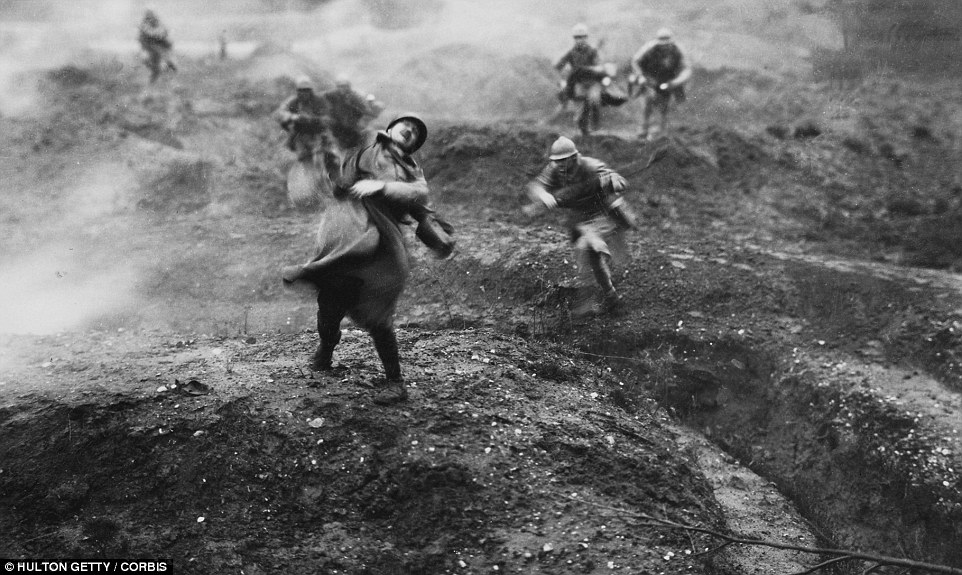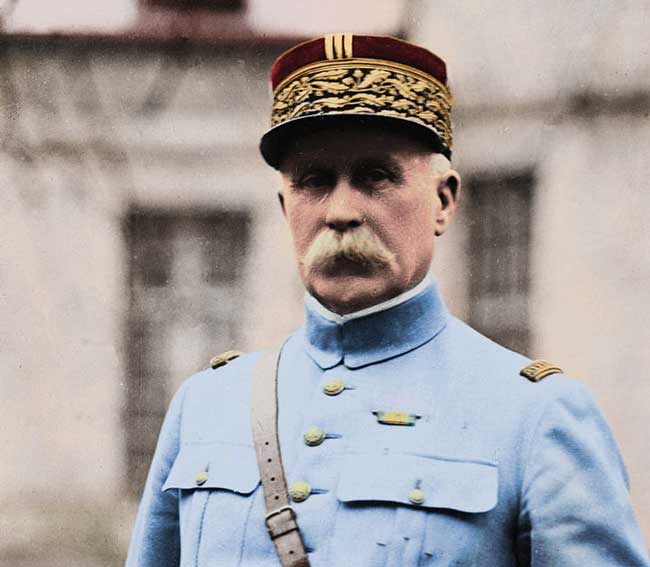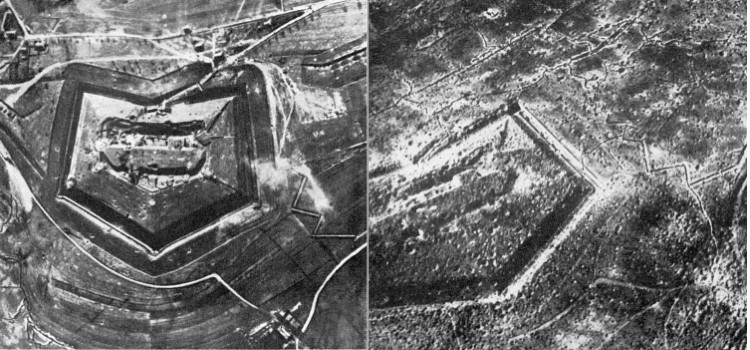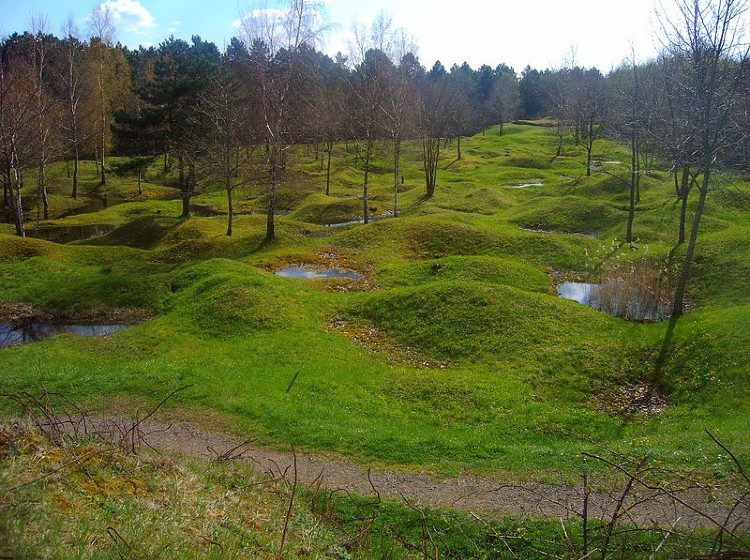
Verdun. Alongside the Somme, the name of the fortress town in eastern France is synonymous with the worst horrors of World War One. The endless rows of white crosses that now cover the area are testament to the war’s longest and hardest-fought battle which lasted 10 months, from 21 February – 18 December 1916.
Just why was it so important that the French were successful in the Battle of Verdun, and what strategic implications did this have for the rest of the war?
Why Verdun?
Significance to Germany:
Germany aimed to crush the French army before the Allies grew in strength with the full deployment of British forces. Without France’s 96 divisions, the Allies would be unable to continue fighting in the west.
Erich von Falkenhayn, the chief of the German General Staff, believed the key to German forces making a breakthrough on the Western Front was to launch a concentrated offensive against the French.
The heavily fortified area of Verdun remained a formidable salient into German territory which threatened the main German communication lines. By attacking Verdun, the French Army would be drawn into circumstances from which it could not escape – for reasons of strategy and prestige.
Believing that the war would be won or lost in France, Falkenhayn hoped that France would ‘throw in every man they have’ to defend it, which would thus drain its army of resources. By combining the Verdun offensive with a U-Boat offensive against British shipping, Falkenhayn thought France and Britain would be forced to make terms with the Germans.
Significance to France:
Verdun was a fortress city on the River Meuse, and a strategically-vital link in the French sector of the Allied line on the Western Front. To the French people, Verdun was also a symbolic fortress and a national treasure. The loss of such a citadel would be an enormous blow to French morale.
 Watch Now
Watch Now“Bleed the French white”
As the war carried on into 1916 and with neither side able to forge a decisive advantage, the German high command began to plan a huge assault on the area, designed to “bleed the French white” and break their morale.

French commanders quickly realised that a new approach would be needed to combat the immensely powerful German artillery. Defence of the fortress was therefore focused on holding lightly-manned but heavily protected smaller forts.
The German plan hinged on the amount of artillery firepower at their disposal, with the aim of enveloping the defences in shellfire in order to minimise German infantry casualties.
Defending to the death
Initial German attacks proved successful, and French commander Philippe Pétain ordered his men to dig-in and defend their new lines to the death. Over the spring of 1916 offensives and counter-offensives were launched at great cost and for little gain for either side.

The ‘Lion of Verdun’, French commander Philippe Petain went on to become a controversial figure in French politics. (Image Credit: Cassowary Colorizations).
Verdun did indeed draw in the French troops as Falkenhayn had wanted: 3/4 of the French Western Front divisions would eventually serve there. However, Pétain used a rotation system to relieve French troops at Verdun, which involved most of the French Army in the battle but for shorter periods than German troops.
German commanders became increasingly desperate, and in early summer began a new attack. By 23 June their vanguard was within 5 kilometers of Verdun’s historic citadel, and it finally seemed as though a breakthrough was possible.
Impact of the Somme
Alarmed at a potential breakthrough by the Germans, allied commanders agreed that something had to be done to take the pressure off the French, and plans were launched for a British attack at the Somme, designed to distract the Germans and draw their men and munitions away from Verdun.
However, while the Germans did move vital guns and men away from the front to combat the new threat, their attacks pressed on. The French were staunch in their defending, and they began to push the exhausted and overstretched Germans back.
Germany accumulated huge losses and gained little territory, leading Falkenhayn to throw more and more men into the conflict, and meaning Verdun also became a battle of prestige for the Germans, as well as the French. The ability of the German army to inflict disproportionate losses on the French had been overestimated, in part because the 5th Army commanders had attacked regardless of losses to their own side.
On 29 August, Falkenhayn was sacked and replaced by Hindenburg and Ludendorff, who ended the German offensive on 2 September.
In October and November, peripheral forts lost in February were recaptured, and the French secured a defensive victory, with the battle ending in December and thousands of Germans surrendering. Although an area larger than the city of Paris had been destroyed and 9 villages had been obliterated, Falkenhayn’s plan to destroy the French army had failed.
 Watch Now
Watch NowThe scale of the battle
The Battle of Verdun was one of the most savagely fought battles of World War One, and became the longest, and one of the most costly, battles in modern history.
In 10 months, the largest swathe of territory gained amounted to a mere 5 miles. Casualties had been high, estimated at approximately half a million men on either side. The trauma of this loss not only affected French political and military decision-making from then on, it had a lasting effect on French national consciousness.
French morale had suffered greatly from the protracted siege. Badly treated and paid, the soldiers had had to endure nearly 10 months of hell. The Germans fired 2 million shells just in the opening 8 hour bombardment. Verdun was also the first time flamethrowers were used in battle, a shocking yet devastatingly effective new weapon.
One French lieutenant, later killed by a rogue shell, wrote in his diary on 23 May 1916:
“Humanity is mad. It must be mad to do what it is doing. What a massacre! What scenes of horror and carnage! I cannot find words to translate my impressions. Hell cannot be so terrible. Men are mad!”
This effect was fully felt after Verdun when, ordered to ready itself for a new offensive, the French army mutinied. Haunted by their experiences defending the giant fortress, thousands of French soldiers refused to fight, forcing Britain to redouble its own efforts further north.

German aerial photographs of Fort Douaumont, before and after the battle (Image Credit: German Government, Department of photos and film / Public Domain).
Strategic implications for the rest of the war
The Allies had planned to defeat Germany through a series of large coordinated offensives, but the German attack at Verdun drastically reduced the number of French troops available. Britain and its Empire would therefore need to lead the big push on the Western Front.
However, Germany (and Falkenhayn in particular) had underestimated the French, for whom victory at all costs was the only way to justify the sacrifices their soldiers had already made. The French army did not collapse and a premature British relief offensive was never triggered.
Ultimately, the French resistance at Verdun proved a turning point, halting the German advance. The heavy German losses at Verdun combined with even greater casualties suffered on the Somme also created a manpower crisis within the German army that would become increasingly difficult to resolve as the war progressed.
 Listen Now
Listen NowLong term effects
Verdun has become the representative memory of World War One for the French, much like the Battle of the Somme in the UK. The battle symbolises the determination of the French Army and the destructiveness of the war.
A century on, the French Interior Ministry estimated that over 10 million shells (many filled with arsenic) have remained in the soil around Verdun, and bomb-clearing units continue to remove some 40 tons of unexploded munitions from the area annually. Parts of the forest are still so dangerous and have such high levels of poison still seeping through the land that the French have sealed them off.
It was estimated that at existing rates of clearance, the de-miners would be uncovering and disposing of ordnance in the Verdun area for centuries to come.

Verdun battlefield shows the impact of artillery shells in 2005. (Image Credit: Public Domain).
(Featured Image Credit: Verdun in ruins, 1916 – World History Archive / Alamy Stock Photo, Image ID: EC84A2).














